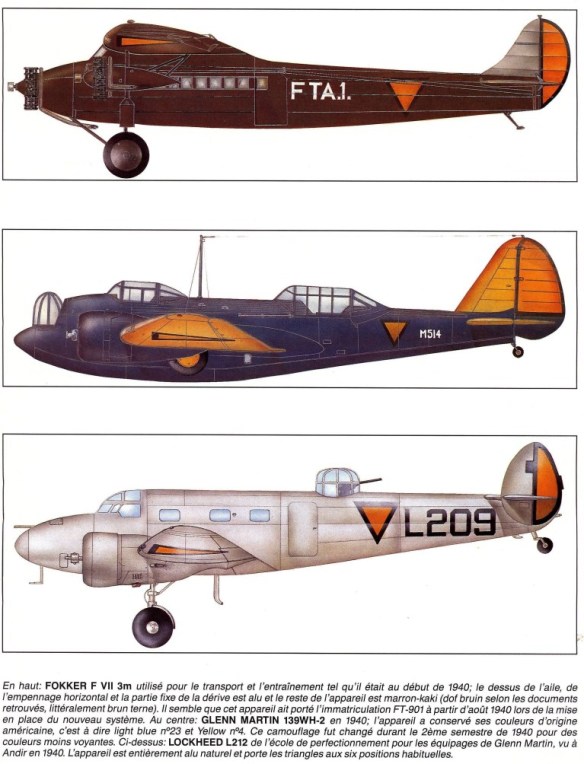In 1933 the Oost-Indisch Leger was renamed Koninklijk Nederlandsch Indsch Leger (KNIL), or the Royal Netherlands Indies Army. During that time, the KNIL numbered around 35,000 men, of which 5,000 were deployed from the Netherlands. In addition, there was a militia (landsturm) that fielded a force of 8,000 men. The KNIL operated training facilities at Meester Cornelis and Magelang on the island of Java for all branches, as well as its small armor force. The air forces of the colony operated second-rate aircraft from counties such as the United States and Great Britain. The navy remained under the control of the Royal Netherlands Navy, and consisted of three cruisers, seven destroyers, a number of smaller ships, and fifteen submarines.
With the German invasion and occupation of the Netherlands in 1940, the colony became one of the last areas of Dutch control. But the East Indies soon found itself facing an outside foe in Japan. The Netherlands declared war on Japan on December 8, 1941, but faced invasion in January 1942. The Japanese conquest of Indonesia lasted roughly three months. The KNIL found itself overwhelmed by the Japanese military forces, and the fighting renewed regional guerrilla activity in the field. The Dutch prisoners were sent to labor and prison camps, and native KNIL troops were given the opportunity to join the Japanese local forces, known as PETA (Pembela Tanah Air).
Air War
Site of early Japanese successes during World War II. In early 1942, the Japanese moved toward the Dutch East Indies in force. Dutch airpower on Java consisted of only a few obsolete Fokker fighters and U. S.-built Martin B-10 bombers. These were reinforced by several British Hawker Hurricanes flown in from HMS Indomitable and some U. S. Curtiss P-40s, as well as various survivors of the debacle in Malaya, such as RAF Lockheed Hudsons and Bristol Blenheims and Fleet Air Arm Vickers Vildebeest torpedo-bombers.
This polyglot Allied force (ABDA, for American, British, Dutch, Australian) was heavily outnumbered in the air by the Japanese 23d Naval Air Flotilla. The Japanese seized one lightly defended island after another: Tarakan off Borneo on 11 January, Celebes on 24 January, Amboina (Ambon) on 31 January, Bali on 19 February. Sumatra, with its important oil fields, was invaded on 14 February. In one of the few parachute drops of the Pacific War, Japanese airborne troops seized airfields on Sumatra.
Four Japanese carriers passed through the East Indies on their way to the Indian Ocean. Aircraft from this fleet attacked Port Darwin in Australia on 15 February, causing heavy damage.
The old U. S. carrier Langley, converted to an aircraft transport, sailed from Australia with a load 32 P-40E fighters and a freighter with 27 more crated P-40s. Japanese aircraft found these ships just south of Java, however, and sank Langley. The crated P-40s could not be unloaded after they reached Java and had to be thrown into the sea.
As a result, the Japanese invasion fleet approached Java virtually unhindered by Allied air threat. ABDA’s surface naval force under Dutch Admiral Karel Doormann attempted to interfere but was defeated in the Battle of Java Sea. Japanese forces landed on Java on 1 March, and resistance ended on 9 March with almost 100,000 Allied troops taken captive. Throughout the campaign, the Japanese proved adept at quickly and effectively preparing newly seized advanced bases for air operations.
KNIL-ML
The primary trainers for the pre-war KNIL-ML (Royal Netherlands East Indies Air Force) were the De Havilland Tiger Moth, Ryan PT Series and Buckner Jungmeister. A number of older Fokker models were also used, although I’m not exactly of which models without spending an hour to look them up.
AVRO 504K
Beech AT-11 Kansan
Brewster B-339D Buffalo
Bücker Bü-131B Jungmann
Commonwealth Wackett
Curtiss P-6 Hawk I
Curtiss 75A-7 Hawk (P-36)
Curtiss P-40E Kittyhawk
Curtiss P-40F-5 Kittyhawk
Curtiss P-40N Warhawk
Curtiss-Wright CW-21B Demon
Curtiss-Wright CW-22 Falcon
De Havilland DH-9
Douglas C-47 Dakota
Douglas C-54 Skymaster
Fairchild 24R
Farman HF-20 / HF-22
Fokker C.Ve
Fokker C.Vd
Fokker C.X
Fokker D.VII
Fokker D.XVII
Fokker D.XXI (prototype)
Fokker F.VIIb/3M
Hawker Hurricane IIb
Koolhoven FK-51
Lockheed 12
Lockheed Lodestar
Martin 139WH-1/2
Messerschmitt Me-108B
Miles 2H Hawk
Mitsubishi Ki.57 “Topsy”
Noorduijn Norseman
North American AT-16 Harvard
North American B-25B/C Mitchell
North American B-25H/J Mitchell
North American P-51D/K Mustang
Piper L-4J Grasshopper
Ryan STM
Ryan ST-3/PT-22
Tachikawa Ki.54 “Soren”
Waco EGC-7
Waco UKC
Both the Messerschmitt Bf108B-1 (MT-928) and Fairchild 24R-9 (FAT-926) were privately owned aircraft. When the Japanese attacked, both planes were pressed into military service as small communication aircraft. They were painted “jongblad” (medium green) and received the orange triangles.
The following civil aircraft were also pressed into military service:
– Waco EGC-7 (WT-903)
– Waco UKC (WT-927)
– 2 Piper J-4E (PT-929 and PT-930)
Koninklijke Nederlands Indisch Leger – Militaire Luchvaart (KNIL-ML)
Bandoeng
1e Vliegtuiggroep Andir:
1eVLGI (9 M139)
2eVLGI (9 M139)
2e Vliegtuiggroep Malang
1eVLGII (9 M139)
3e Vliegtuiggroep Tjilitjan
1eVLGIII (9 M139)
2eVLGIII (9 M139)
3eVLGIII (9 M139)
4e Vliegtuiggroep Madioen
1eVLGIV (12 H75)
2eVLGIV (12 Cw21)
5e Vliegtuiggroep Semplank
1eVLGV (12 B339)
2eVLGV (12 B339)
6e Vliegtuiggroep Jogjakarta
1eVLGVI (9 Cw22)
2eVLGVI (9 Cw22)
Vliegschuul (disestablished 5Dec41): 60 Ryan PT, 30 FK51,
16 Lockheed 12, 20 M139
> 3eVLGV (B339)
> 3eVLGVI (FK51)
> 4eVLGVI (Lockheed 12)
> 7eVLGVI (M139)
+ 1 Afdeling (FK51)
Aircraft Depot Andir
Koninklijke Marine Luchvaartdienst
Groep Vliegtuigen 1 (3 Do24k) Ambon
Groep Vliegtuigen 2 (3 Do24k) Sorong
Groep Vliegtuigen 3 (3 Do24k) Soerabaya
Groep Vliegtuigen 4 (3 Do24k) Sambas
Groep Vliegtuigen 5 (3 Do24k) Ternate
Groep Vliegtuigen 6 (3 Do24k) Morokrembangan
Groep Vliegtuigen 7 (3 Do24k) Tarakan
Groep Vliegtuigen 8 (3 Do24k) Poeloe Samboe
Groep Vliegtuigen 11 (3 TIVw) Morokrembangan
Groep Vliegtuigen 12 (3 TIVw) Morokrembangan
Groep Vliegtuigen 13 and 14 (5 CXIw) Morokrembangan or embarked
Groep Vliegtuigen 16 (3 PBY) Tandjong Priok
Groep Vliegtuigen 17 (3 PBY) Ambon
